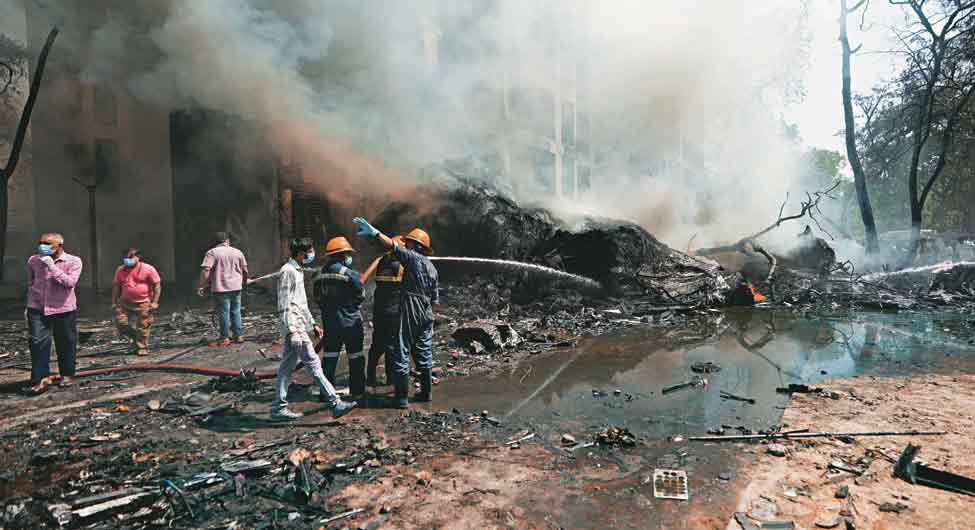Both Cockpit Voice Records and Flight Data Records (Black Box) have been recovered from the fierce accident site of Air India flight number AI 171, just outside Ahmedabad’s Sardar Vallabhbhai Patel International Airport. The American Boeing company aircraft was 787–8 Dreamliner, which left for London Gatwick. With the help of the accident Boeing Company, a sharing investigation of the Indian Aircraft Accident Investigation Bureau (AAIB), the US National Transportation Safety Board (NTSB) and the UK Air Accidents Investigation Branch (AAIB, UK) are going on. The initial data from these recorders may begin to come out within 72 hours. The investigator, especially the engine matrix, signs of bird collision and then the pilot’s reactions to the cockpit in the first second is to be seen.
The natural question arises that what can be the reasons for such a terrible accident in the modern aircraft considered the safest in the world? Aircraft accidents are not usually due to any one reason. Many reasons are caused by joining or joining. For example, machine malfunction, weather failure, human omission and any procedure disturbances. When these reasons are added, the arrangements designed for the prevention of accident are disturbed.
Birds collide
Initial speculation in the Ahmedabad case fears the birds colliding. Many experts say that the flock of birds would have collided with the aircraft as soon as he flew, which would have led to both his engines. Birds collide less attention, but especially when flying and landing, when the aircraft is in low height and slow speed, the big birds get stuck in the jet engine, especially on both sides, then the aircraft can eat a jerk. Air India aircraft fell in Ahmedabad from a height of less than 700 feet from the ground, it is possible that the pilots did not get a chance to recover or return for emergency landing.
Machine disturbances
Machine disturbances are also an important reason. Steel -edge airframes can also cause major machine disturbances. The record of Boeing 787 has been flawless since the beginning, with many issues related to lithium-ion battery system, engine’s reliability and frame durability. Although no flaws in these were the cause of previous accidents, this is the first major accident related to Dreamliner in Ahmedabad. Investigators will undoubtedly investigate whether there is an ignorant reason for any machine disturbance. It is possible that the engine, onboard flight can cause disturbances in the computer. Boeing 787-8 has a history of complaints related to technology. These flaws can be revealed again in view of this tragedy.
Pilot omission
According to details of the Directorate General of Civil Aviation (DGCA), Captain Sumit Sabharwal of the flight number AI 171 was an experienced pilot, flying aircraft for more than 8,000 hours including hundreds of hours in Dreamliner. His co-pilot also had a flying experience of about 1100 hours. The fact is that there was a request for a medium or rescue. This shows that the pilots had identified huge disturbances and started an emergency protocol. However, both engines in the aircraft may have failed or there would have been a major disturbance, then their options were probably very limited. The flight did not reach such a height that could be returned to the airport or emergency systems could be started, as it requires higher height.
Risk of fire
The aircraft was on a long distance journey, filled with sufficient fuel. When an aircraft crashes with full tank at low altitude, the risk of fire raging increases. When the aircraft fell in Ahmedabad and a huge fire was raised, the surrounding buildings were also hit, leading to the number of casualties.
Arranged flaws
The DGCA has also suffered criticism for immediate action and luxury monitoring-surveillance. Now questions can be raised about the measures to prevent bird collision at Ahmedabad airport. Are local aircraft managing their waste and residential area properly? Do they maintain effective radar systems to detect birds? Answers to these questions can play an important role in shaping prevention measures.
The new accident has also brought fresh memories of the Indian Airlines flight 113 accident in Ahmedabad in 1988, which was near the same airport. Then due to not appearing in the fog, the aircraft came down ahead of time due to the pilot’s mistake, crashed into the ground near the runway. The similarity between these two tragedies is a serious truth: despite decades passing and advanced avionics, plane accidents occur when several layers of security break together.
Experts believe that there is a need to further enhance the training of pilots to consider the training of pilots to consider re -design to save engines after birds collide after birds collide, rethinking a certain distance from the residential areas near the airport, and to deal with the conditions of the power system breakdown or lighting in the aircraft. In addition, aircraft manufacturers such as Boeing may have to face not only Dreamliner, but also a re-investigation of maintenance issues or after-sales support obligations.
Whatever it is, but in the future, ways to prevent such incidents have to be found.
